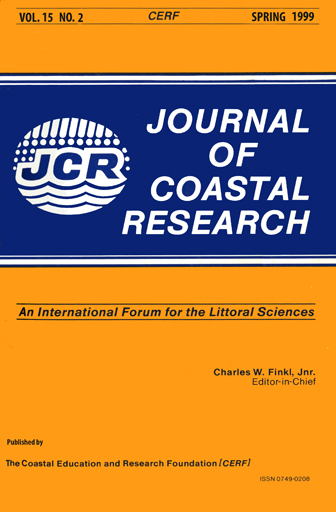Mesoscale Sediment Transport at Southeastern U.S. Tidal Inlets: Conceptual Model Applicable to Mixed Energy Settings
Keywords:
Inlet model, ebb-tidal delta, shoal bypassing, mesoscale, inlet sediment budget, waves, tidal currents.Abstract
Prediction of shoreline change around inlets at meso-time scales (years to decades) is the next logical step following verification of microscale models. If mesoscale simulations are a goal, a basic question is how microscale models (that simulate processes at hours to weeks) can be scaled up in time or whether macroscale geomorphic models (that qualitatively describe changes at decades to centuries) can become more quantitative. The authors propose an approach that begins with consideration of tidal inlet morphology and sediment circulation around ebb-tidal deltas. Inlets are the focus because in some barrier island settings such as the southeast U.S. coast, it appears a majority of coastal erosion problems at meso-time scales can be traced to changes in adjacent inlets. Inlet morphology and geomorphic models, typical of mixed-energy coastal plain shorelines, are reviewed to illustrate certain common sediment transport patterns. A simplified conceptual model of inlets at meso-time scale is proposed from which the problem of sediment transport may be spatially partitioned. Four primary inlet domains are considered: (A) main ebb channel where tidally generated ebb currents control sediment discharge, (B) ebb-tidal delta with a broad swash platform that is ultimately in balance between ebb-directed flows and wave- and tide-generated shoreward transport, (C) shoal bypassing zones at the margins of the ebb-tidal delta where sediment shifts unidirectionally from the delta to the shoreline under wave-generated transport , and (D) recurved spits adjacent to the inlet which receive shoal-bypass sediments. Excess sand accumulating in Domain D becomes subject to longshore advection toward and away from the inlet. A portion nourishes the adjacent beach and the remainder recycles back to the inlet channel (Domain A), completing the inlet transport loop.Downloads
Published
1999-04-09
Issue
Section
Articles


